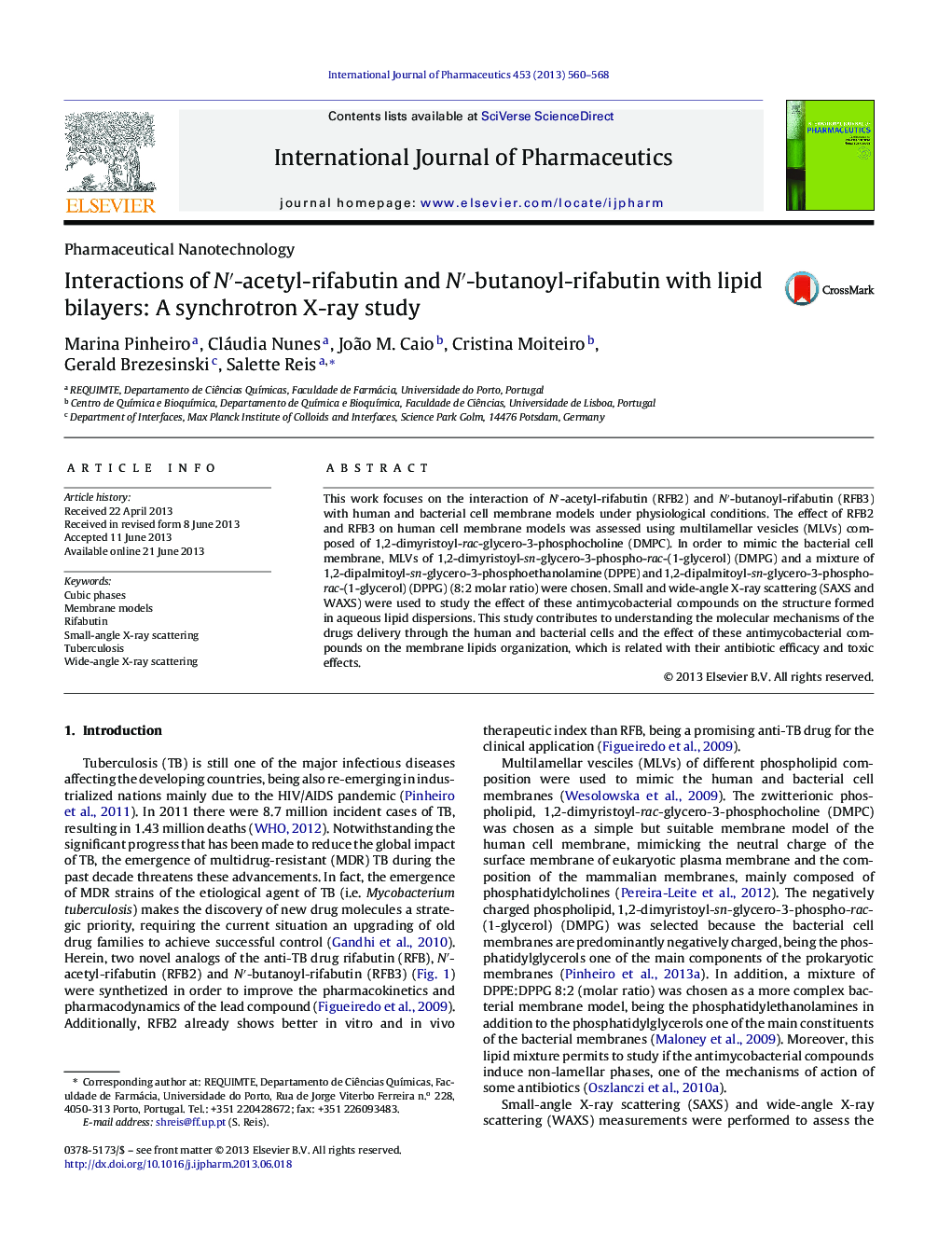| کد مقاله | کد نشریه | سال انتشار | مقاله انگلیسی | نسخه تمام متن |
|---|---|---|---|---|
| 2502208 | 1557379 | 2013 | 9 صفحه PDF | دانلود رایگان |

• The interaction of novel antimycobacterial compounds (RFB2 and RFB3) with membrane models was assessed using SAXS and WAXS.
• RFB2 and RFB3 show a pronounced disordering effect in the bacterial membrane models.
• RFB2 and RFB3 induce the formation of isotropic (cubic) phases in the bacterial membrane model.
• This study contributes to the design of more effective and less toxic anti-TB drugs.
This work focuses on the interaction of N′-acetyl-rifabutin (RFB2) and N′-butanoyl-rifabutin (RFB3) with human and bacterial cell membrane models under physiological conditions. The effect of RFB2 and RFB3 on human cell membrane models was assessed using multilamellar vesicles (MLVs) composed of 1,2-dimyristoyl-rac-glycero-3-phosphocholine (DMPC). In order to mimic the bacterial cell membrane, MLVs of 1,2-dimyristoyl-sn-glycero-3-phospho-rac-(1-glycerol) (DMPG) and a mixture of 1,2-dipalmitoyl-sn-glycero-3-phosphoethanolamine (DPPE) and 1,2-dipalmitoyl-sn-glycero-3-phospho-rac-(1-glycerol) (DPPG) (8:2 molar ratio) were chosen. Small and wide-angle X-ray scattering (SAXS and WAXS) were used to study the effect of these antimycobacterial compounds on the structure formed in aqueous lipid dispersions. This study contributes to understanding the molecular mechanisms of the drugs delivery through the human and bacterial cells and the effect of these antimycobacterial compounds on the membrane lipids organization, which is related with their antibiotic efficacy and toxic effects.
Figure optionsDownload high-quality image (125 K)Download as PowerPoint slide
Journal: International Journal of Pharmaceutics - Volume 453, Issue 2, 10 September 2013, Pages 560–568